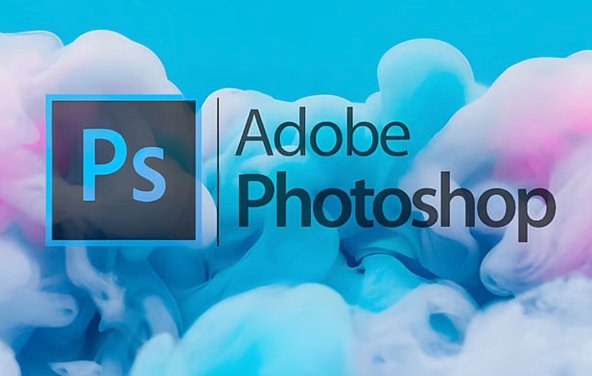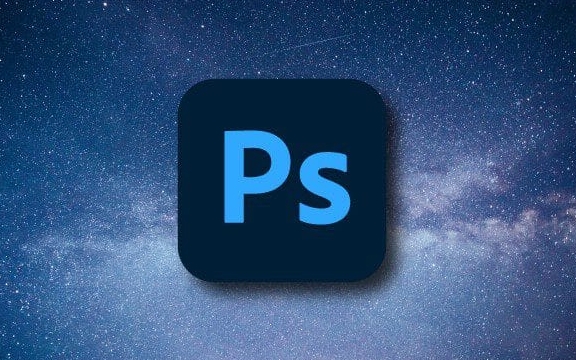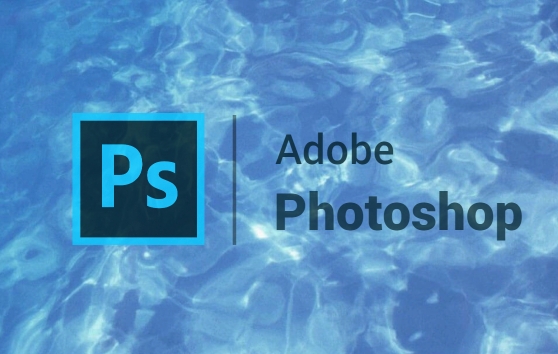It is not difficult to play Photoshop with a tablet, the key is to master several key points. 1. Install Photoshop for iPad and log in to your Adobe account, enable automatic save, set gesture shortcut keys, and customize the toolbar. 2. Be familiar with the simplified interface layout and focus on mastering layer management, selection tools and modification tools. 3. Use Apple Pencil to improve accuracy and set touch operation habits to improve efficiency. 4. Use seamless synchronization with the desktop version to achieve efficient collaboration between mobile editing and fine processing.

Playing Photoshop with a tablet is actually much easier than you think. Adobe has optimized mobile devices a lot in recent years, and Photoshop's iPad version is already capable of many mild or even moderate design tasks. But if you want to use it smoothly, you still have to know some key points.

1. Installation and basic settings
First, you need to download "Photoshop for iPad" on your iPad. It is not free and requires Adobe Creative Cloud subscription support (such as photography plans or full app plans). After the installation is complete, log in to your Adobe account and you can sync your cloud documents, presets and fonts.

A few things to do before using:
- Turn on the "auto-save" function to avoid misoperation and loss of progress
- Set gesture shortcut keys, such as pinching the two fingers back to the previous step
- Drag common tools into the custom toolbar to save time searching
These small settings will make your operation much smoother, especially if you don't have an external keyboard.

2. Be familiar with interface and tool layout
Photoshop for iPad is similar to the desktop version, but it has been simplified for touch operation. The main interface is divided into several main areas: the layer panel, the toolbar, the property panel, and the canvas itself.
Focus on these parts:
- Layer management : Click the icon in the lower right corner to open the layer panel. Drag the layer sorting and adjust the transparency are very intuitive.
- Selection tools : There are "Object Selection", "Quick Selection" and "Lasso", which are suitable for the selection needs of different scenarios.
- Modification tools : Repair brushes, cloning stamps, etc. are all under the "Modification" menu, which is necessary to edit pictures.
At first, I may feel that the button is a little small, but I will get used to it after practicing it a few more times. If your fingers are too big and affect the accuracy, you can use Apple Pencil to improve accuracy.
3. Cooperate with Apple Pencil and touch
Apple Pencil is the best partner for using Photoshop tablet version, especially when drawing, editing, and adjusting details, which is much more convenient than fingers. You can set pressure sensing, tilt angle and other functions for Apple Pencil, and even bind shortcuts, such as double-clicking to switch erasers.
In terms of touch, Photoshop iPad version supports common operations such as zooming, dragging, and long pressing to bring up hidden tools. After you become proficient, you will find that many actions that you originally had to use your mouse to complete on your computer are faster with your fingers.
4. Collaborate with desktop version more efficiently
Although the iPad version has a very comprehensive function, it is more suitable for mobile office, quick editing or inspiration. It is best to return to the desktop version to continue processing complex projects.
The good news is that Photoshop can seamlessly sync files on iPad and PC/Mac. Wherever you have changed the content, refresh the other side and you will see the update. If you are used to using tablets to design and refine them on your computer, this combination of punches will be very easy.
Basically all this is it. Photoshop is not difficult to use on a tablet, but to be able to use it easily, you still have to take some time to familiarize yourself with the operating logic and tool position. Don’t rush to pursue efficiency when you get started. Start practicing with simple picture adjustments and you will be able to figure out the tricks slowly.
The above is the detailed content of How to use Photoshop on a tablet. For more information, please follow other related articles on the PHP Chinese website!

Hot AI Tools

Undress AI Tool
Undress images for free

Undresser.AI Undress
AI-powered app for creating realistic nude photos

AI Clothes Remover
Online AI tool for removing clothes from photos.

Clothoff.io
AI clothes remover

Video Face Swap
Swap faces in any video effortlessly with our completely free AI face swap tool!

Hot Article

Hot Tools

Notepad++7.3.1
Easy-to-use and free code editor

SublimeText3 Chinese version
Chinese version, very easy to use

Zend Studio 13.0.1
Powerful PHP integrated development environment

Dreamweaver CS6
Visual web development tools

SublimeText3 Mac version
God-level code editing software (SublimeText3)

Hot Topics
 How can custom brushes be created and managed within Photoshop?
Jun 20, 2025 am 12:13 AM
How can custom brushes be created and managed within Photoshop?
Jun 20, 2025 am 12:13 AM
To create and manage custom brushes, first create a black and white image or selection and define it as a brush preset, then design the brush shape by creating a new document or selection, and then save it using "Edit - Define Brush Preset". When organizing brushes, you can open the brush panel to create new groups and organize categories; adjust brush settings such as shape dynamics, scattering, and textures to optimize effects; finally export the selected brush as .abr files through the brush preset panel for backup or sharing.
 What are the advantages of using linked Smart Objects versus embedded Smart Objects?
Jun 18, 2025 am 12:01 AM
What are the advantages of using linked Smart Objects versus embedded Smart Objects?
Jun 18, 2025 am 12:01 AM
The main advantages of using linked smart objects are that file management is more efficient, file size is smaller, and collaboration is more convenient. Specifically: 1. Linking smart objects to achieve cross-project updates by referring to external source files, and can be synchronized to all associated documents in one place; 2. Since the original file is not embedded in PSD, the file size is significantly reduced and the opening and processing speed is improved; 3. Support better version control and team collaboration, which facilitates the handover of resources separately without exposing the complete design. At the same time, attention should be paid to keeping the file path consistent to avoid chain breakage. In contrast, embedded smart objects are suitable for final delivery files without subsequent modifications, while linked smart objects are more suitable for long-term maintenance and multi-file collaborative work.
 How does the 'Select and Mask' workspace improve the process of refining selections?
Jun 19, 2025 am 12:05 AM
How does the 'Select and Mask' workspace improve the process of refining selections?
Jun 19, 2025 am 12:05 AM
Photoshop's Select and Obscure workspace simplifies the processing of complex selections with granular edge adjustments, real-time feedback and multiple output options. First, use the "Refine Edge Brush Tool" to accurately modify hair or soft edges, and support quick adjustment of brush size and sensitivity; second, it provides multiple real-time preview modes such as overlay, black field, and ant line to facilitate timely correction; second, it quickly adjusts edge smoothness, feathering and other parameters through sliders to optimize the selection effect; finally, it supports outputting the results as selections, masks or new documents, seamlessly connecting subsequent processes.
 How do Adjustment Layers provide a non-destructive workflow for image corrections in Photoshop?
Jun 21, 2025 am 12:02 AM
How do Adjustment Layers provide a non-destructive workflow for image corrections in Photoshop?
Jun 21, 2025 am 12:02 AM
AdjustmentLayersinPhotoshopareessentialfornon-destructiveeditingbecausetheyallowcolor,brightness,andcontrastadjustmentswithoutalteringoriginalpixels.1.Theyfunctionastransparentoverlaysthataffectlayersbeneaththem.2.Eachadjustmentlayerincludesamasktoco
 What is dithering, and how does it affect image quality when reducing color depth?
Jun 27, 2025 am 12:09 AM
What is dithering, and how does it affect image quality when reducing color depth?
Jun 27, 2025 am 12:09 AM
Dithering is a technique that simulates more colors through pixel arrangement to reduce visual loss when color depth is reduced. When the image color depth is reduced, if it drops from 24-bit colors (about 16 million colors) to 8-bit colors (only 256 colors), a large amount of color information will be lost, resulting in a smooth gradient of ribbons or flat areas; dithering makes it visually blended by spreading pixels of different colors, thereby softening the transition effect. Its principle is based on the ability of the human eye to fuse adjacent pixels, making the overall vision close to the original image, and is especially suitable for low-color formats such as GIF, limited color support device display and digital art stylization. Whether to use dithering depends on the specific needs: ?Usage scenarios include converting photos or complex graphics to limited color tuning
 How does 'Image Size' differ from 'Canvas Size' in Photoshop?
Jun 26, 2025 am 12:05 AM
How does 'Image Size' differ from 'Canvas Size' in Photoshop?
Jun 26, 2025 am 12:05 AM
ImageSizechangestheactualimagedimensionsandresolution,whileCanvasSizeadjustssurroundingspacewithoutalteringtheimage.ImageSizeaffectspixelcount,documentsize,andresolution,makingitcrucialforprintorwebuse,andcancauseblurringifenlargedtoomuchwithoutresam
 How can artboards be used to manage multiple design variations or screens within a single document?
Jun 28, 2025 am 12:21 AM
How can artboards be used to manage multiple design variations or screens within a single document?
Jun 28, 2025 am 12:21 AM
Artboards is used in design software to manage multiple variants or screen layouts. Its core role is to organize design content, improve navigation efficiency, and facilitate delivery and display. They operate like standalone pages and can accommodate different screen sizes, design variants, or process steps such as mobile layouts, desktop versions, and dark mode. By grouping relevant designs, such as registration, boot, and dashboard pages in user processes and reasonably naming them, clarity and prototype link efficiency can be improved. With automatic layout and constraints, components can be reused across artboards and maintained consistency, and all instances are updated synchronously when modifying the main component. At the same time, you need to pay attention to file performance to avoid slowing down too many high-detail artboards. You can optimize file efficiency by hiding inactive artboards, reducing asset repetitions, and using variants.
 How to use Photoshop on a tablet
Jun 28, 2025 am 12:23 AM
How to use Photoshop on a tablet
Jun 28, 2025 am 12:23 AM
It is not difficult to play Photoshop with a tablet, the key is to master several key points. 1. Install PhotoshopforiPad and log in to your Adobe account, enable automatic save, set gesture shortcut keys, and customize the toolbar. 2. Be familiar with the simplified interface layout and focus on mastering layer management, selection tools and modification tools. 3. Use ApplePencil to improve accuracy and set touch operation habits to improve efficiency. 4. Use seamless synchronization with the desktop version to achieve efficient collaboration between mobile editing and fine processing.






